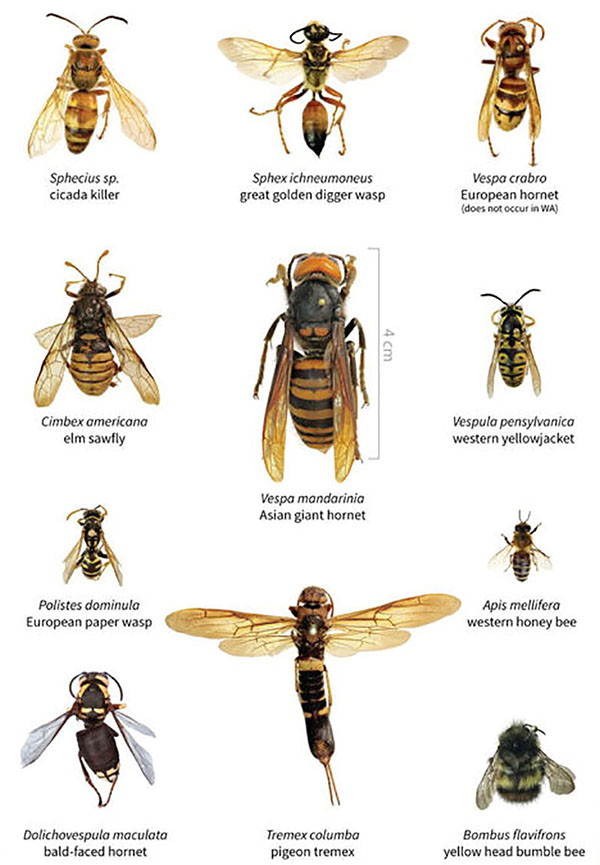Murder Hornets’ from Asia spotted in U.S. for first time
The world’s largest species of hornet, which can wipe out a honeybee hive in a matter of hours, has been spotted for the first time in the United States, according to The Washington Department of Agriculture (WSDA).
Asian giant hornets—also known as “murder hornets,” the “Giant Sparrow Bee,” and the “yak killer”—measure up to 2 inches long and prey on large insects, such as praying mantises, wasps, other hornets, as well as bees. They are so lethal that just one can kill 40 European honey bees in one minute, while a small group of them can decimate an entire bee colony, decapitating them and taking the hive as their own and using the thoraxes from the dead bees to feed their young.

Their stingers are also long and strong enough to puncture beekeeping suits, and as a result can be deadly to humans, as a group of them can expose victims to doses of toxic venom equivalent to that of a venomous snake. The venom can destroy red blood cells, resulting in kidney failure and eventual death.
Over a three-month period in 2013, Asian giant hornets killed 42 people and injured 1,675 more in China, while Japan reports that the deadly hornets kill 50 people a year.
Despite the killer hornets being native to temperate and tropical Eastern Asia, in December 2019, The Washington Department of Agriculture (WSDA) received and verified four reports of Asian giant hornets near Blaine and Bellingham. These are the first-ever sightings in the United States. Canada had also discovered Asian giant hornets in two locations in British Columbia in the fall of 2019. Scientists do not know how the hornets entered North America.
The New York Times described the hornet’s distinctive look as having “a cartoonishly fierce face featuring teardrop eyes like Spider-Man, orange and black stripes that extend down its body like a tiger, and broad, wispy wings like a small dragonfly.” The WSDA recently published a poster showing what the Asian Giant Hornet looks like and its notable difference in size compared to several other insects.
Researchers, eager to stop the murder hornets from establishing a home in the United States and decimating bee populations, have since launched a full-scale hunt for the hornets.
“This is our window to keep it from establishing,” Chris Looney, an entomologist at the Washington State Department of Agriculture, told the NY Times. “If we can’t do it in the next couple of years, it probably can’t be done.”